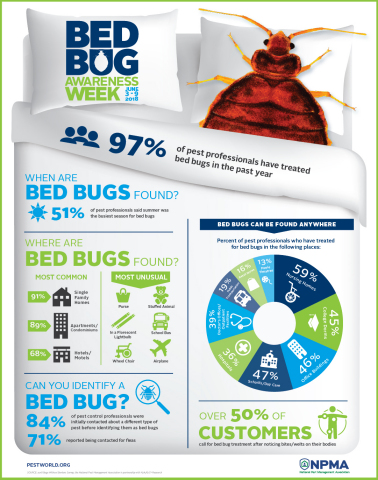Take Advantage Of Your Knowledge Of Rodent Nesting Patterns To Exceed These Bugs And Fine-Tune Your Rodent Administration Methods
Take Advantage Of Your Knowledge Of Rodent Nesting Patterns To Exceed These Bugs And Fine-Tune Your Rodent Administration Methods
Blog Article
Content Created By-Lorenzen Thorsen
When it involves rodent control, comprehending usual rodent habits is key to effectively taking care of invasions. Did you recognize that rats have some fascinating nesting behaviors that might surprise you? By exploring their elaborate actions, you can get important insights into just how to deal with rodent issues in an extra calculated and efficient way. So, allow's unravel the mysteries behind these animals' actions and learn exactly how to outsmart them in your rodent control efforts.
Rodent Nesting Habits
When observing rodents in their natural environment, you'll see that they proactively seek products to create their nests. Rats, such as mice and rats, are clever animals that utilize a range of products like branches, leaves, paper, and textile to develop their homes. They're meticulous in their nest-building process, often lining their nests with softer products like fur or plumes to create a cozy environment.
Rodents favor to develop their nests in covert and safe and secure locations to protect themselves and their young from killers. Usual nesting places consist of wall dental caries, attic rooms, basements, and also within insulation products. By constructing their nests in these remote areas, rats can securely raise their spawn away from possible dangers.
It is important to comprehend the nesting practices of rats when carrying out control actions. By disrupting their nests or eliminating materials, you can discourage rodents from establishing a presence in your home or residential property. https://www.mypmp.net/2023/01/19/rockit-pest-acquires-petri-pest-control-services/ and sealing entrance factors are additionally essential steps in stopping rodent infestations.
Rat Feeding Patterns
After observing rats' nesting behaviors, it comes to be evident that their feeding patterns play an essential role in their lives and habits. Rodents, including mice and rats, are opportunistic feeders, meaning they'll eat whatever food resource is easily offered. They're largely nocturnal animals, choosing to forage for food throughout the cover of evening to prevent killers.
Rodents have a varied diet, ranging from grains, seeds, fruits, and veggies to pests, nuts, and also little animals. This adaptability in their food options enables them to grow in numerous environments, consisting of city areas where human food resources are bountiful.
Their feeding patterns aren't only driven by appetite yet likewise by the requirement to stock food for times of shortage. This behavior is specifically visible in preparation for cold weather or when nesting. Rats are understood to hoard food in their nests or burrows, ensuring a constant food supply. Understanding their feeding patterns is essential in executing efficient rodent control steps to disrupt their food resources and prevent problems.
Rodent Movement and Traveling
Rats browse their surroundings with dexterity and stealth, using their keen senses to relocate quickly through their atmospheres. These creatures are skilled climbers, able to scale walls and vertical surfaces easily. They can likewise squeeze via remarkably small openings, making it important to seal any possible entry points in your house.
When it pertains to traveling, rats tend to comply with acquainted courses, producing routes along walls or skirting the edges of spaces. They're creatures of habit, frequently adhering to these established paths as they forage for food or explore their surroundings.
Rats are recognized for their nighttime practices, so you may hear them scampering about during the night as they search for food and water. Their motions are quick and unpredictable, allowing them to dart in and out of view in the blink of an eye.
Understanding just how rats relocate and take a trip can aid you recognize possible invasion locations in your house and take aggressive actions to stop these parasites from gaining a foothold.
Verdict
As you work to manage rodents in your house, keep in mind that comprehending their actions is vital. By recognizing their nesting practices, feeding patterns, and activity, you can successfully stop infestations.
Coincidentally, by taking proactive procedures to eliminate food resources and seal entrance points, you can disrupt their acquainted paths and require them to seek new places, ultimately reducing the probability of rodent presence in your space.
